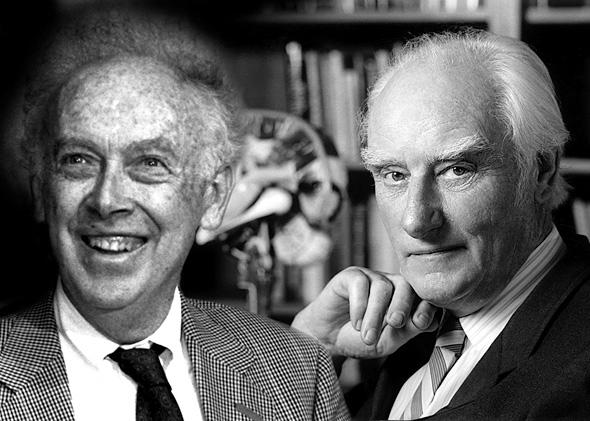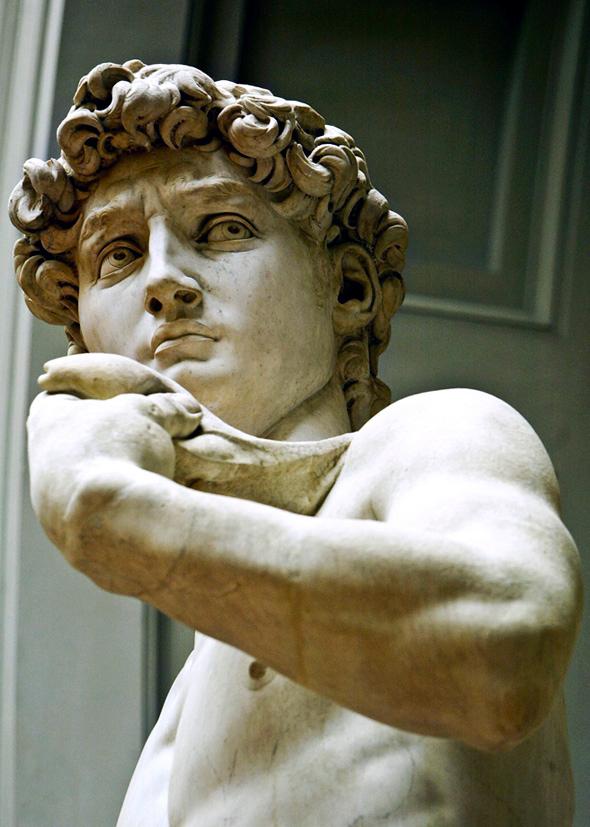If you want a look at a high-profile field dealing with a lot of humbling snags, peer into #ASHG2013, the Twitter hashtag for last week’s meeting of the American Society of Human Genetics, held in Boston. You will see successes, to be sure: Geneticists are sequencing and analyzing genomes ever faster and more precisely. In the last year alone, the field has quintupled the rate at which it identifies genes for rare diseases. These advances are leading to treatments and cures for obscure illnesses that doctors could do nothing about only a few years ago, as well as genetic tests that allow prospective parents to bear healthy children instead of suffering miscarriage after miscarriage.
But many of the tweets—or any frank geneticist—will also tell you stories of struggle and confusion: The current list of cancer-risk genes, the detection of which leads some people to have “real organs removed,” likely contains many false positives, even as standard diagnostic sequencing techniques are missing many disease-causing mutations. There’s a real possibility that the “majority of cancer predisposition genes in databases are wrong.” And a sharp team of geneticists just last week cleanly dismantled a hyped study from last year that claimed to find a genetic signature of autism clear enough to diagnose the risk of it in unborn children.
This sample reads like an abstract of the entire field of genetics. In researching a book about genetics over the past four years, I’ve found a field that stands in a bizarre but lovely state of confusion—taken aback, but eager to advance; balanced tenuously between wild ambition and a deep but troubling humility. In the 13 years since the sequencing of the first human genome, the field has solved puzzles that 14 years ago seemed hopeless. Yet geneticists with any historical memory hold a painful awareness that their field has fallen short of the glory that seemed close at hand when Francis Collins, Craig Venter, and Bill Clinton announced their apparent triumph in June 2000.
Many geneticists gained this awareness directly. Two years ago I spent a day walking around Cambridge University with Daniel MacArthur, a young geneticist who was then a postdoc. It made a good spot for perspective-taking on genetics: At Cambridge almost a century ago, a biologist named William Bateson coined the term “genetics” for the field he and the university would play key roles in establishing. At Cambridge—or rather at the Eagle, a campus-side pub that might as well be part of the university, so thoroughly do their histories entwine—James Watson and Francis Crick first announced, at lunchtime one day in 1953, that they had figured out the structure of DNA.
MacArthur moved last year to a lab at Harvard Medical School, where he hunts and finds rare-disease genes. But that summer day two years ago, as we walked the history-soaked campus, he told me a tale of comeuppance that parallels his discipline’s.
Back in the early 2000s, soon after the sequencing of the human genome, MacArthur was working on his doctorate in Australia when he and some colleagues identified a gene that appeared to give a huge boost to athletic performance. The gene is called ACTN3. Everyone carries two copies of this gene, one from each parent. In some people, one or both of these ACTN3 genes are crippled by a variant of another gene. People with two damaged ACTN3 genes tend to be on the slow side and rarely excel in sports. Most elite sprinters, meanwhile, carry two good copies. ACTN3 looked to be a sort of sprinting gene, creating a speed effect both profound and straightforward.
MacArthur and his colleagues published their findings in 2003, to many huzzahs. This, it seemed, was the sort of thing sequencing the human genome made possible.
So far, so great. Nice clean story. The state of your ACTN3 genes, in the words of a company that later sought to sell tests for it, “may determine the type of athlete you were born to be.”
But as MacArthur explained that day in Cambridge (and later in a blog post), this nice, clean story got muddier as he and others studied the gene more closely. They realized that the 2003 study had relevance only to a tiny fraction of humanity—elite-level sprinters—in whom the gene’s effect looked larger and more straightforward than it actually was.
In addition, the gene appeared to boost performance mainly in sprinting. For other sports, it probably had no effect or even substantial downsides.
Was this a sports gene? Nay. More like a modest sprinting gene. Did it give a sprinter an advantage? Not really, because about 4 out of 5 people carried at least one clean copy of the gene. So although in theory this gene could help you if you wanted to compete as a sprinter, in practice it probably didn’t help at all, since pretty much every sprinter you ran against probably also carried one or two copies. In other words, ACTN3 didn’t make you fast so much as it made you not slow. A sprinter with this gene was like a basketball player who was 6 feet 4 inches: Being 6 feet 4 inches tall would probably ensure you weren’t the shortest player out there, but to be the tallest, you were going to have to have help from a mess of other genes that no one had yet spotted.
In the end, MacArthur concluded this “sports gene” was no more predictive of athletic performance than, well, athletic performance. Screening for it wouldn’t tell you anything you couldn’t learn from a footrace.
In talking to other geneticists over the past few years, I’ve found many with a similar experience. It’s almost like a rite of passage. A smart young geneticist—sometimes not so young—finds an effect linked to a particular gene, slaps high-fives around the lab, publishes … and then finds the effect turns out to be muddy, faint, and ambiguous.
This is more or less the story of genetics since the human genome was sequenced. As already noted, it’s not the whole story. Geneticists, including MacArthur, are making rare-disease discoveries—more every year—that actually save lives.

Photo illustration by Lisa Larson-Walker. Photos courtesy Wikimedia Commons (2)
Yet the work is proving far harder than hoped. When Watson and Crick cracked the structure of DNA in 1953, it seemed they had found the shape of the key needed to unlock the mystery of life. Half a century later, many thought sequencing the human genome would unlock the door and show us the genome’s machinery, with all the parts and controls and levers and knobs conveniently marked. We’d be able to do almost anything. Instead, it showed us a genome that was mostly unmarked and ludicrously complicated—so complicated that even 13 years later, its workings remain mysterious.
The many geneticists who, like MacArthur, have closely experienced or witnessed disappointment feel keenly their field’s constraints and difficulties. At the same time, many of them are figuring out how at least small systems within this great machine work—a pulley here, a vacuum regulator there. And they rightly find immense satisfaction, not to mention status and opportunity, in identifying faulty parts that can kill.
That day that MacArthur walked me around Cambridge, we finished up with a couple of pints at the Eagle, where Watson and Crick had shouted out their discovery some 60 years before. As we pondered the humility of post-sequence genetics, it struck me that if the field is currently a bit lost in the fog, whoever clears the air could become to Watson and Crick as Watson and Crick were to Darwin. A century passed between Darwin and DNA, and another half-century passed before the human genome sequencing effort promised but failed to explain how DNA worked. There remains the glittering prospect of finding some systemic secret to how the great genomic machine operates.
Does the answer lie, as MacArthur once wondered aloud on Twitter, in some dimension or mode of information exchange we haven’t yet learned to see? Some meta-code we haven’t deciphered? Or will understanding the genome—a patchwork affair by definition—be a matter of finding one unique kludge after another?
History-soaked geneticists like MacArthur are understandably hesitant to shout “Eureka!” They’ve done that once—at least once—and been humbled.
And yet—who can resist reaching for such a prize?

Photo by Vincenzo Pinto/AFP/Getty Images
Not to get too fancy, but have you ever seen the actual statue of Michelangelo’s David? Do so and you will of course see the hints of awkward youthfulness familiar from photos—the body’s beauty and promise, but also the oversized hands, the hint of boyhood remaining in his hips.
You’ll also see something I’ve never found perceptible in any photo: David, depending on how you look at him, stands both in contemplative, even humble repose, his weight solidly fixed on his back foot … and, as he moves onto his front, in the moment of initiating action. This effect shifts back and forth depending on your viewing angle and what you look at. From some angles, as with a good visual illusion, you can manage to see only one of these realities. From other angles you can see both at once. It is breathtaking. He is standing inert; he is stepping toward his target. You are watching, for hours if you wish, the flickering microsecond in which a youth becomes an adult.
No model could strike this pose. Yet if you could hold it, what a wonderful stance to take.
